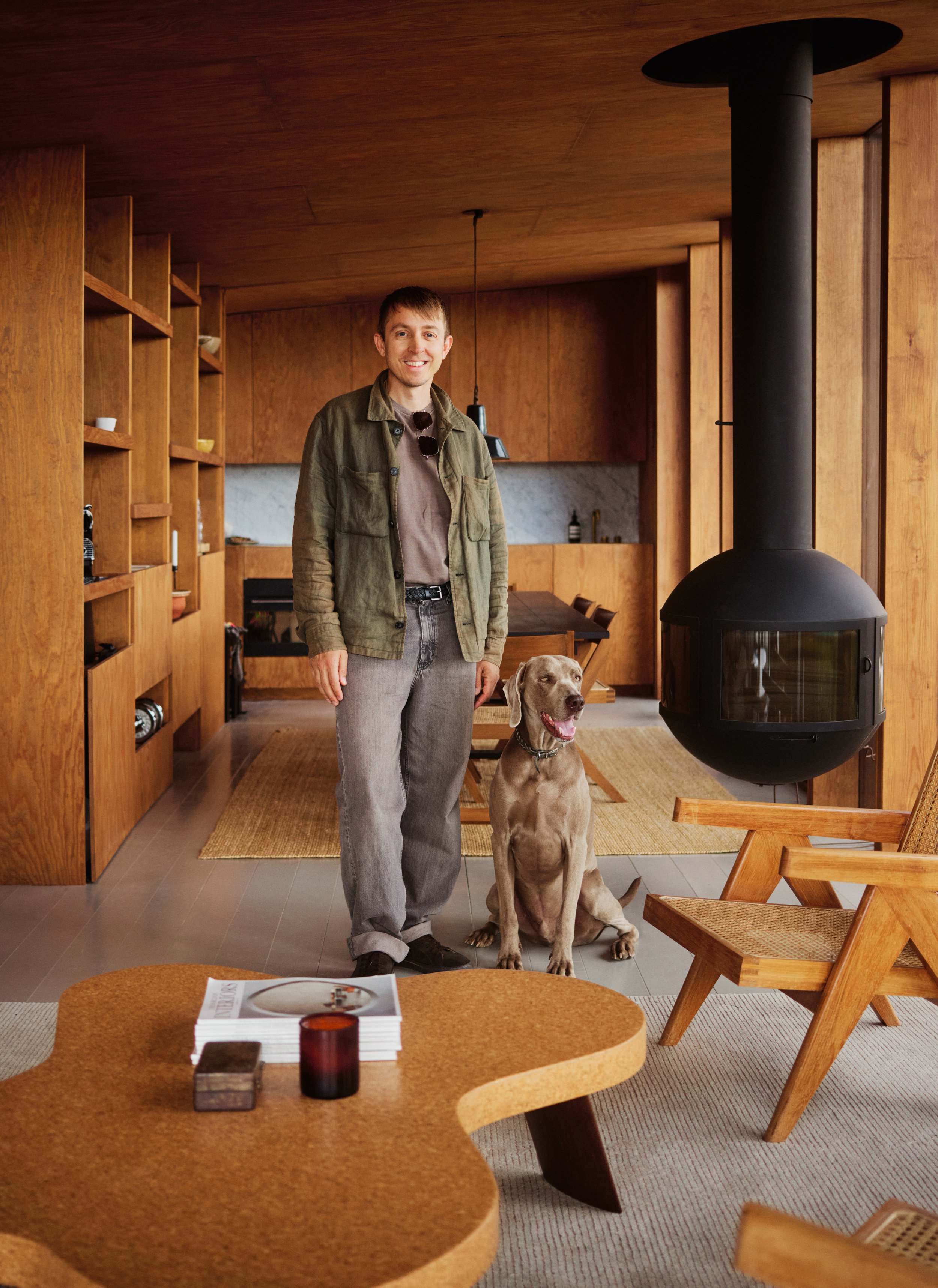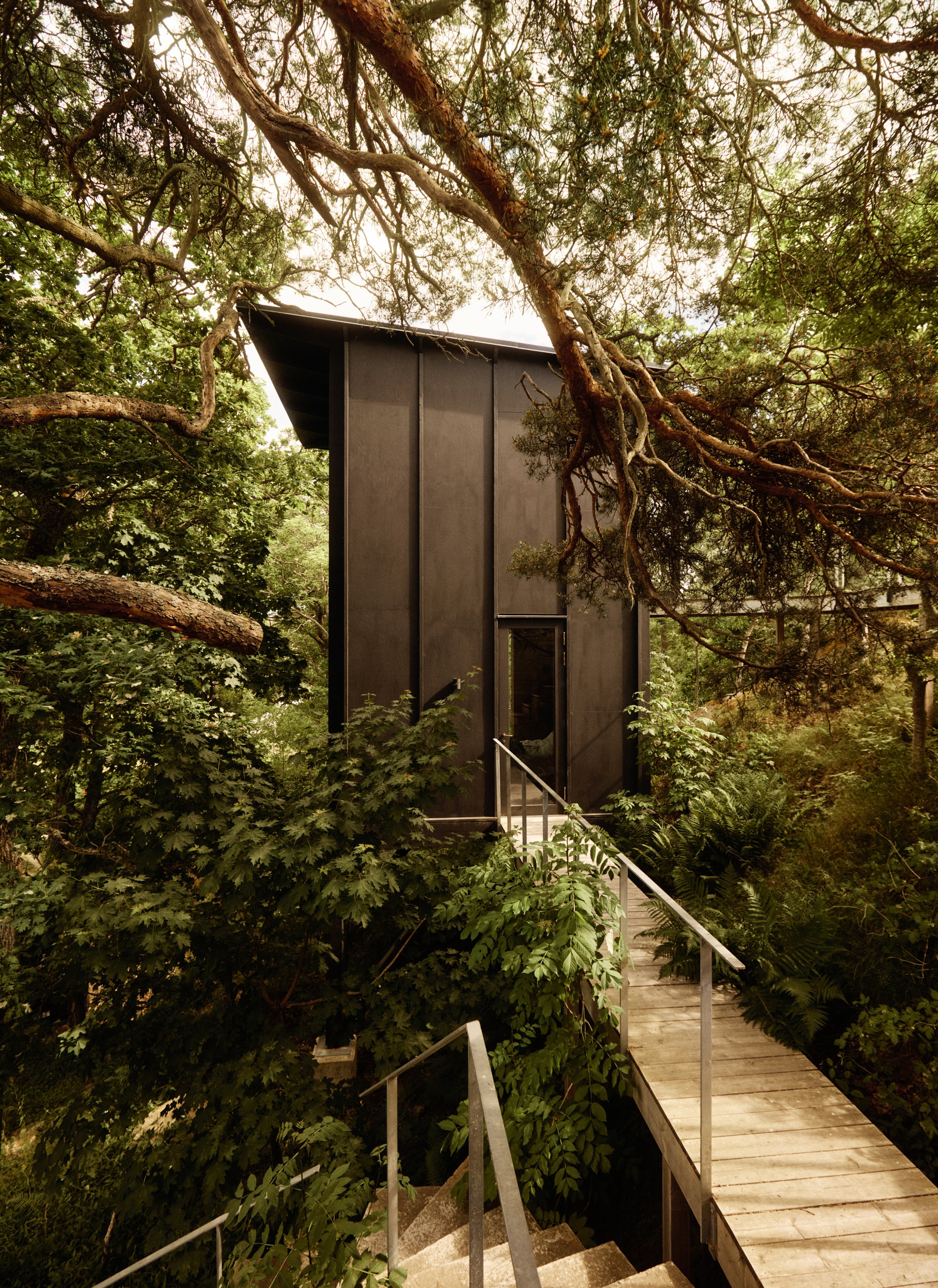
Aspvik
The extension of Andreas Martin-Löf’s vacation home Aspvik breathes simplicity and luxury through both it’s location and views, as well as it’s refined interiors. The extension built between 2019-2022 features several _UNTITLED lamps. In pictures, _01 Cone 115 Blackened Brass and _02 Hemisphere Blackened Brass.
Excerpt from article in Edit Magazine by NO GA:
Andreas Martin-Löf has never been precious about keeping his homes private. He acknowledges that the act of showing and sharing them, in both reality and media, social or otherwise, is a powerful tool for bringing opportunities to his door. A picture of Aspvik, his extremely photogenic plywood and marble summerhouse, was one of Instagram’s most-shared images in 2018. “I have an inner life that is disconnected from the images, so I’ve never minded being public about my private spaces,” he explains. “That said, I don’t like the idea of my homes being show homes quite so much. They are personal. When I entertain, I like people to enjoy being together in each other’s company, and not spend time talking about the apartment design.”
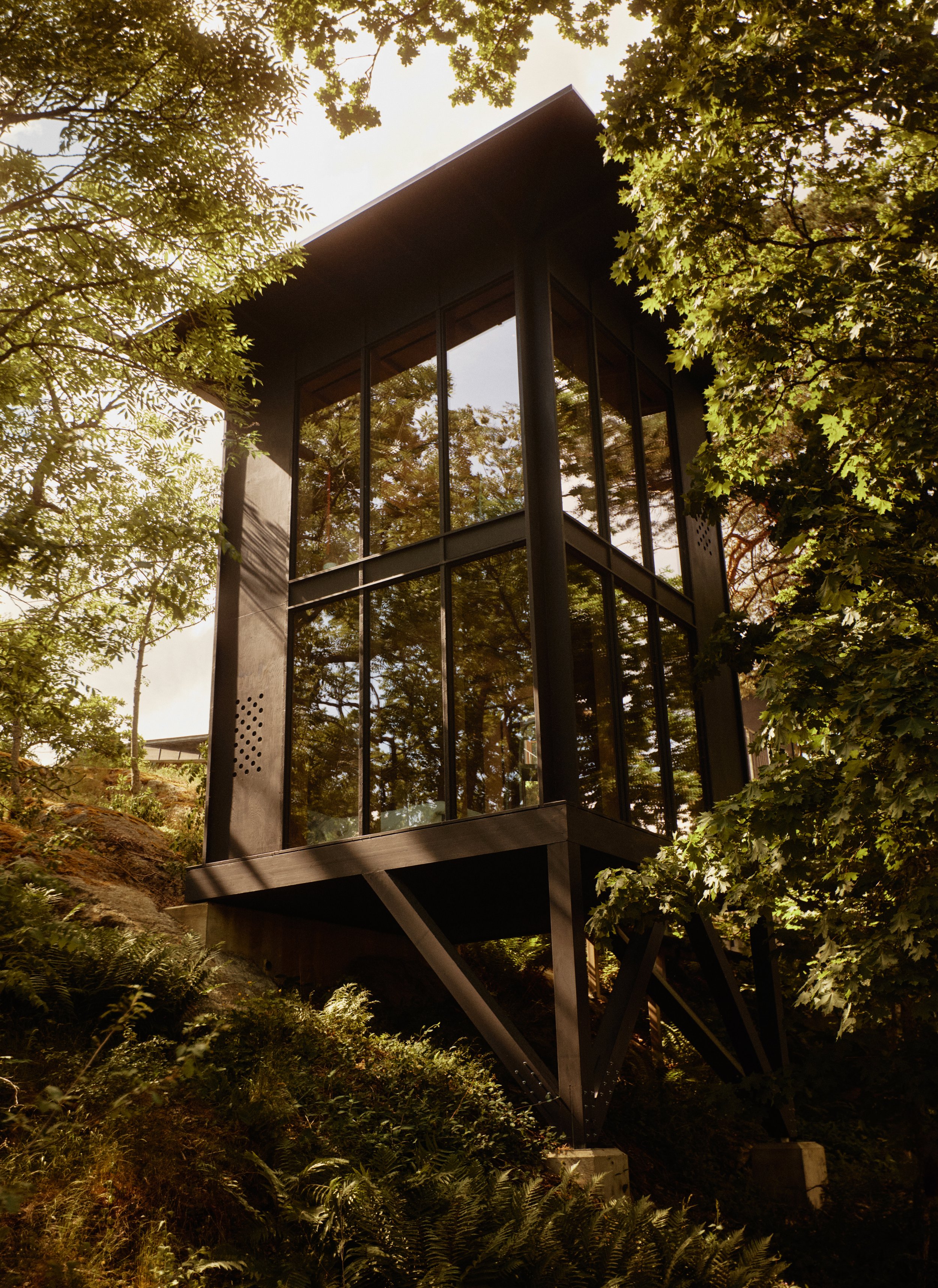
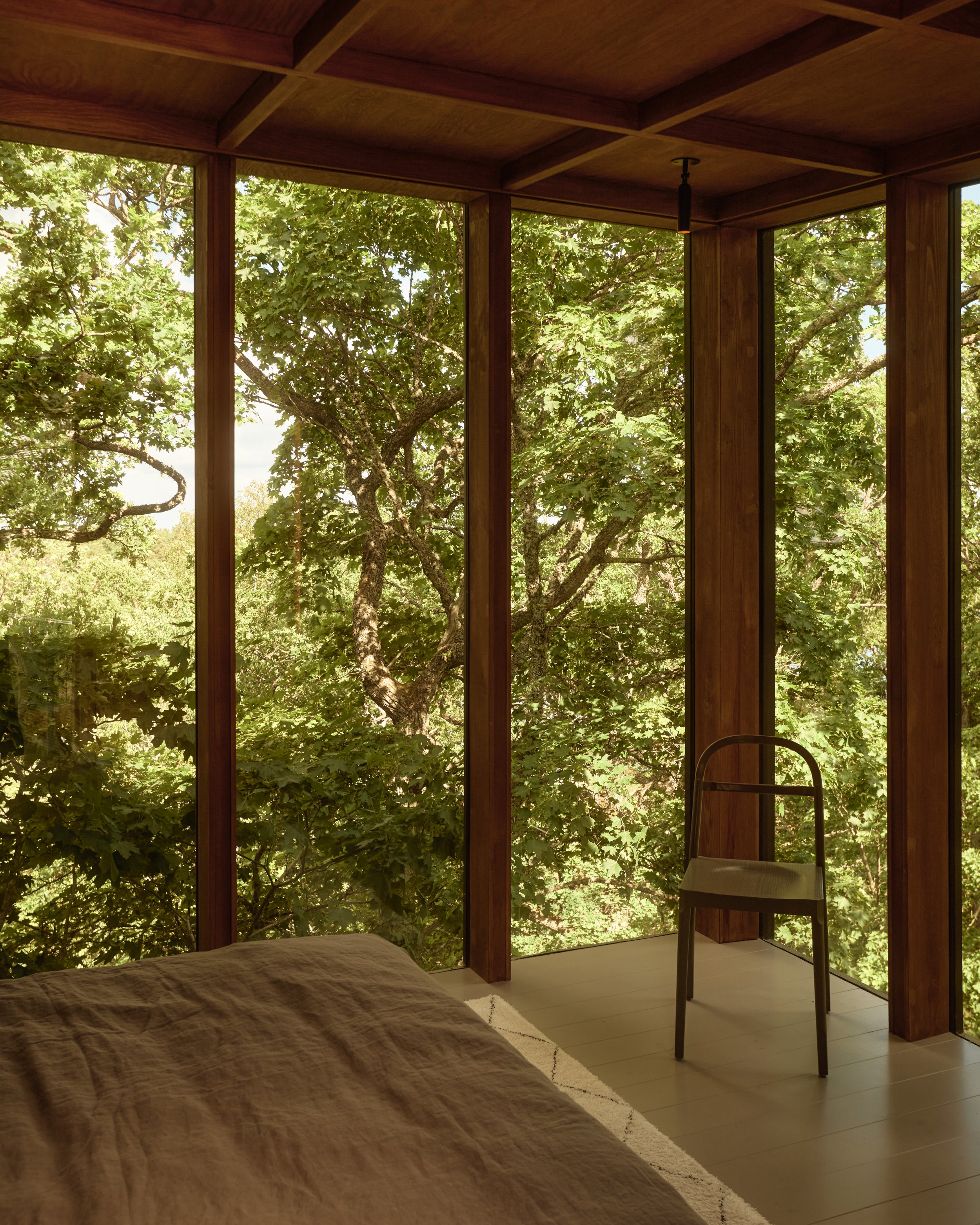
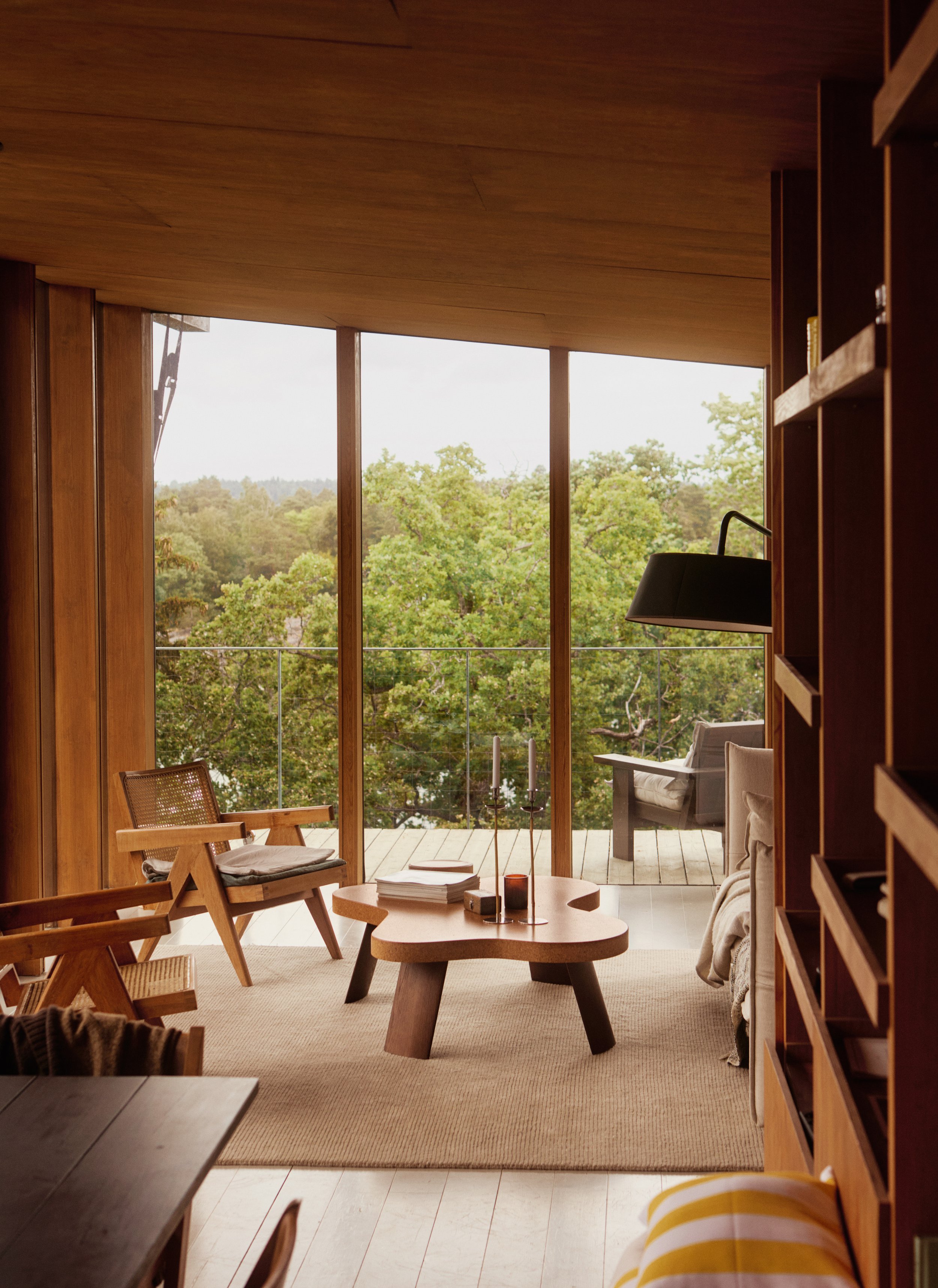

Almost ten years after the main house at Aspvik was built, architect Andreas Martin-Löf faced a new challenge: designing a guest house that could live up to its predecessor. "It’s like making a second album after a hit debut," he says. "I wanted it to be just as compelling, but in a different way."
A trip to Fire Island, New York, sparked the idea. Inspired by Horace Gifford’s minimalist wooden homes, Martin-Löf decided to strip the design down to its essentials. "Those houses weren’t about luxury but strong ideas," he explains. "I wanted to do the same—pure architecture, free from unnecessary systems."
The guest house spans 30 square meters over two floors, each with a bedroom. Built with laminated timber and standard framing, it mirrors the main house with black wooden cladding. A wooden walkway connects the two, echoing Fire Island’s simple boardwalks. "It’s a playful nod to that inspiration—just wiring and a water hose, nothing that inflates the budget," he says.
By limiting windows, he kept the structure purely wooden, free from metal reinforcements. Martin-Löf values craftsmanship over mass production. "I learn from past techniques, when construction was more hands-on," he says. "Building should stay practical, not pretentious."
